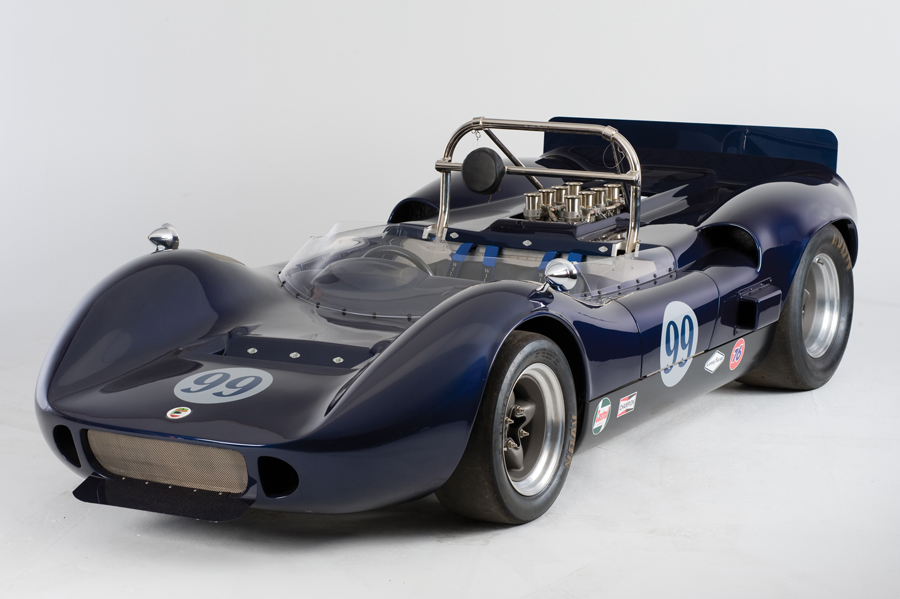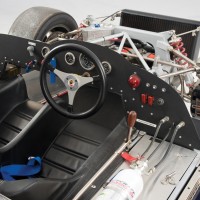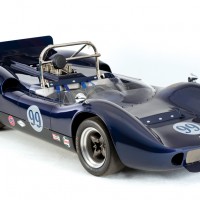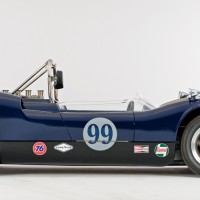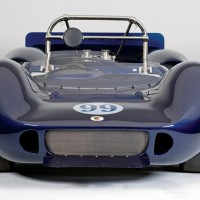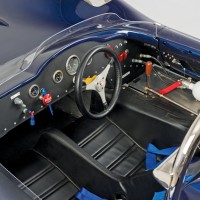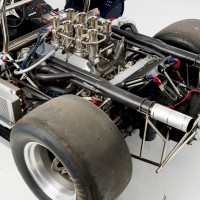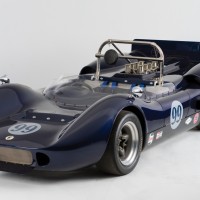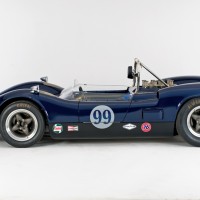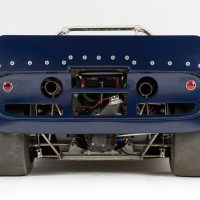SCM Analysis
Detailing
| Vehicle: | 1966 McLaren M1B Can-Am racer |
| Years Produced: | 1965–66 |
| Number Produced: | 28 |
| Original List Price: | N/A |
| SCM Valuation: | Median to date, $227,500; high sale, $344,500 |
| Chassis Number Location: | Brass tag on cockpit bulkhead |
| Engine Number Location: | Unknown (likely doesn’t have one) |
| Club Info: | Historic Can-Am Association |
| Website: | http://www.historiccanam.com |
| Alternatives: | 1965–67 Lola T-70, 1968–71 McLaren M8 A-D, 1969 Lola T163 |
| Investment Grade: | B |
This car, Lot 258, sold for $220,000, including buyer’s premium, at RM Sotheby’s Phoenix, AZ, sale on January 29, 2016.
Way back in 2004, I wrote a profile about an M6 McLaren, and it went like this: “It has been said that the vintage-racing experience exists as a combination of craft, adrenaline, testosterone and ego. Can-Am cars clearly occupy the ground where adrenaline and testosterone are at the maximum. They are at once wildly exciting and absolutely terrifying. They are generally hot and uncomfortable to sit in, difficult to see out of, heavy to steer or slow down, and numbingly loud inside. But if you can hustle one of these babies around the track, nobody will ever question your manhood.”
Nobody who has driven a Can-Am racer will ever forget the first time they strapped themselves in and pulled the trigger; it’s one of those “my first time” memories that those who have had the experience treasure forever.
For me, accustomed to small-bore sports racers, it was like sitting in an artillery shell aimed down the main straight with a continuous explosion happening behind me as I tried to keep my foot on the accelerator. And it was in a McLaren M1B like today’s subject, so yes, I have strong feelings about these cars.
High speed, few rules, huge money
The whole idea that started as the United States Road Racing Championship (USRRC) and became the Can-Am series was the result of a fortuitous confluence of social, political and technological factors that took place in the mid-1960s.
The social had to do with the development of a large American market for “spectacle” auto racing — crowds that wanted to feel the ground shake when the flag dropped. The political had to do with rules. In Europe the FIA was concerned with endurance racing and trying to improve safety by limiting horsepower. The American SCCA managed to talk the FIA organization into adopting a set of rules (called Group 9) that allowed fundamentally unlimited American-style sports racing cars to compete in short sprint races. This sanction made it possible for the world’s best racing drivers to come to the U.S. and race for what were to become the fattest purses that the automotive world had ever seen.
The technical side had to do mostly with tires. In 1962, the nastiest race tire available had about 6.5 inches of tread width, which limited the amount of horsepower you could get to the ground, not to mention turning or stopping the weight that came with it.
Except for long courses, small and light counted for as much as big and powerful. However, by 1967, 12-inch-wide rims and 14 inches of slick tire were normal, so the equation was reversed: horsepower ruled. The other big development was the maturing of the mid-engined design concept and components, such as transaxles, that could handle V8 horsepower.
The doors were thus thrown open to the spectacle called Can-Am racing.
Enter McLaren
Bruce McLaren was a very successful Grand Prix driver with Cooper who had aspirations to build his own cars. Since he was under contract to Cooper for formula racing, and being very aware that there was good money to be made in U.S. professional racing, he decided to concentrate on sports racers.
He created Team McLaren to design and build the first McLaren Mk1 utilizing a Traco-built Oldsmobile V8. It first ran in September 1964 and was immediately shipped to America for the remaining USRRC races. He didn’t win, but he did very well. It was obvious that the car was a winner, so McLaren went home very pleased.
The next problem — how to build multiple examples — pretty much solved itself when Frank Nichols came to call. Nichols had founded the Elva racing car company, and had a racing car factory that needed work.
It was quickly agreed that Elva would build the Mk1 under license for McLaren, which resolved production issues and left McLaren itself free to be a race team and design new cars. Elva built 21 of the “McLaren-Elva” Mk1s, and they were a major factor in both the 1965 USRRC season and European events, mostly with 4.5-liter Traco Oldsmobile power, but some with 289 Fords and small-block Chevys.
It turns out there is no substitute for cubic inches.
The M1B and Can-Am
September of 1965 saw the introduction of the M1B, and it went into immediate production. It was a clear evolution of the Mk1 but built to Group 9 rules, which allowed a simpler, purer racing car. The tubular frame was strengthened, and provision was made for wheels and tires that seemed to be getting wider by the month. The nose shape was very blunt in an attempt to reduce the lift of the sharp-nosed Mk1. Elva continued to be the production facility and built 28 M1Bs.
The M1B served both the McLaren team and the customers for the initial Can-Am series in 1966, although the team cars evolved a bit more than the customer ones as the season wore on.
The 5-liter Traco Olds engines were dropped in favor of 5.7-liter Chevrolets, which were heavier but far more powerful.
Although the M1Bs had some success and were always in the hunt, the 1966 season belonged to Lola’s T70 (Bruce McLaren came in 3rd).
For 1967, Team McLaren built a new monocoque car for itself (the Mk6) and left Elva to build the M1C for customers.
The M1Bs and Cs quickly became spear-carriers as the newer cars took over the series. The M1Bs and M1Cs continued to fill the back of the grids for years.
Not real, not right — but welcomed
So what are we to make of our subject car?
The most important starting place is that it is not real and makes little or no claim to be. It is also egregiously wrong mechanically.
Apparently, the owner started with an original frame but couldn’t use it, so the car has been entirely fabricated within the past 10 years. It has no known chassis number (“identification no. 25” — M1B chassis numbers are all “30/–”) and no claimed history.
Its engine is an aluminum 348-ci Ford with Edelbrock heads — none of which even existed until sometime in the 1980s, and M1Bs never carried Ford engines to start with.
The Wilwood brakes are 21st century technology with little in common with the solid-rotor Girlings that came on the cars, and that’s just the obvious stuff.
The good news is that, under the circumstances, probably nobody cares.
The car looks gorgeous and presents as a proper M1B. In the Can-Am grids where it would run, no M1 McLaren will ever run above mid-pack, so its entry will be welcomed and its peculiarities overlooked in service to a full grid and a good show.
It just needs to be understood for what it is: a thrilling and fun — but purely weapons-grade — toy to show to your friends and go scare yourself with.
Any collector value is incidental and mostly imagined. It was never misrepresented, and the sales price of $220,000 is well below the expected $275,000–$375,000 range for M1Bs, so the asterisks in provenance and correctness were reflected in the price.
I will suggest that the car was fairly bought for what it is. The new owner, if he is brave enough, will have a lot of fun with it. ♦
(Introductory description courtesy of RM Sotheby’s.)
